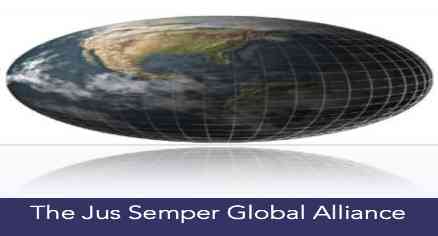The First Geological Age of the Anthropocene
Under the assumption that the Anthropocene will soon be officially designated as the earth’s current epoch, there remains the question of the geological age with which the Anthropocene begins, following the last Holocene age, the Meghalayan. Adopting the standard nomenclature for the naming of geological ages, we propose, in our role as professional environmental sociologists, the term Capitalinian as the most appropriate name for the new geological age, based on the stratigraphic record, and conforming to the historical period that environmental historians see as commencing around 1950, in the wake of the Second World War, the rise of multinational corporations, and the unleashing of the process of decolonisation and global development. In the Anthropocene Epoch, it is clear that any designation of ages, while necessarily finding traces in the stratigraphic record, has to be seen, in part, in terms of human socioeconomic organisation, not purely geologically. The most widely accepted social-scientific designation for the predominant world economic Earth System on a geological scale of millions system over the last few centuries is capitalism. The capitalist (or perhaps tens of millions) of years.system has passed through various stages or phases, the most recent of which, arising after the Second World War under U.S. hegemony, is often characterised as global monopoly capitalism. Beginning with the first nuclear detonation in 1945, humanity emerged as a force capable of massively affecting the entire Earth System on a geological scale of millions (or perhaps tens of millions) of years. The 1950s are known for having ushered in “the synthetic age,” not only because of the advent of the nuclear age itself, but also due to the massive proliferation of plastics and other petrochemicals associated with the global growth and consolidation of monopoly capitalism. The designation of the first geological age of the Anthropocene as the Capitalinian is, we believe, crucial because it also raises the question of a possible second geological age of the Anthropocene Epoch. The Anthropocene stands for a period in which humanity, at a specific point in its history, namely the rise of advanced industrial capitalism following the Second World War, became the principal geological force affecting Earth System change (which is not to deny the importance of numerous other geological forces, which are not all affected by human action, such as plate tectonics, volcanism, erosion, and weathering of rocks, in shaping the Earth System’s future). If capitalism in the coming century were to create such a deep anthropogenic rift in the Earth System through the crossing of planetary boundaries that it led to the collapse of industrial civilisation and a vast die-down of human species ensued—a distinct possibility under business as usual according to today’s science—then the Anthropocene Epoch and no doubt the entire Quaternary Period would come to an end, leading to a new epoch or period in geological history, with a drastically diminished human role.4 Barring such an end-Anthropocene and even end-Quaternary extinction event, the socioeconomic conditions defining the Capitalinian will have to give rise to a radically transformed set of socioeconomic relations, and indeed a new mode of sustainable human production, based on a more communal relation of human beings with each other and the earth. Such an environmental climacteric would mean pulling back from the current crossing of planetary boundaries, rooted in capital’s creative destruction of conditions of life on the planet. This reversal of direction, reflecting the necessity of maintaining the earth as a safe home for humanity and for innumerable other species that live on it, is impossible under a system geared to the exponential accumulation of capital. Such a climatic shift would require simply for human survival the creation of a radically new material-environmental relation with Earth. We propose that this necessary (but not inevitable) future geological age to succeed the Capitalinian by means of ecological and social revolution be named the Communian, derived from communal, community, commons.
For a full read of this essay, click here or on the picture to download the pdf file.
|

- © The Jus Semper Global Alliance
| Home |  | Resources |  | Economic Data |  | The Capitalinian |


